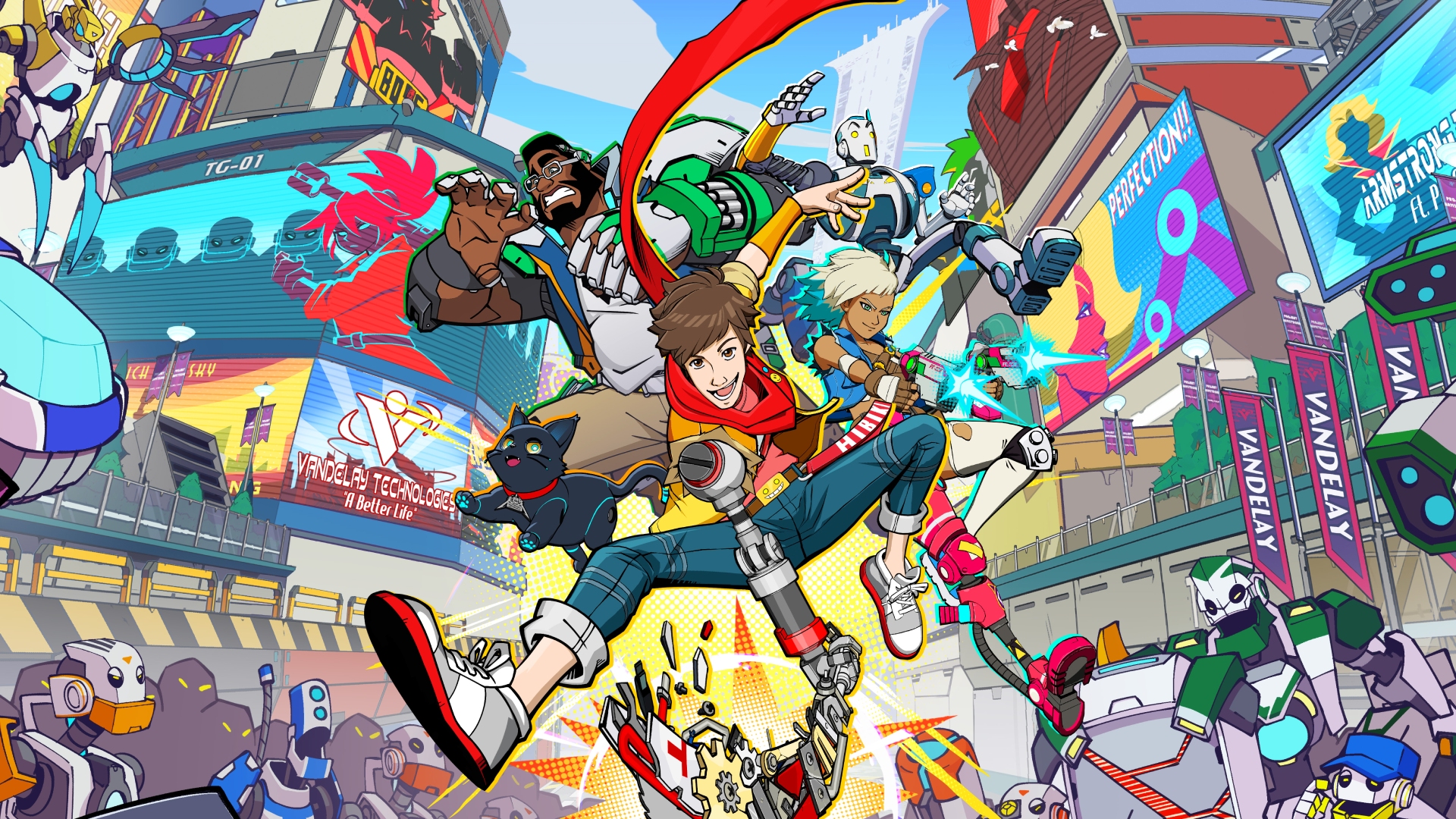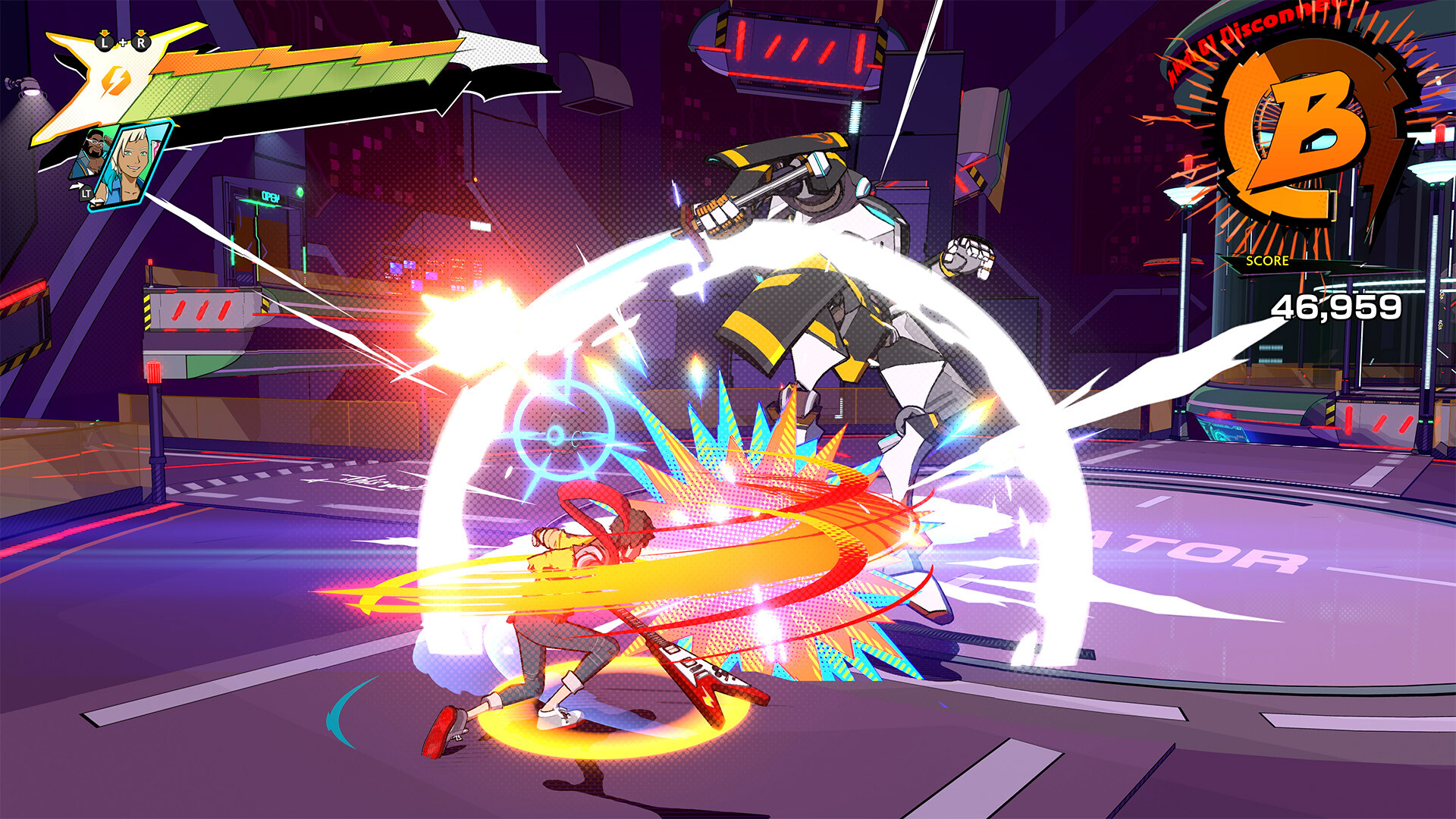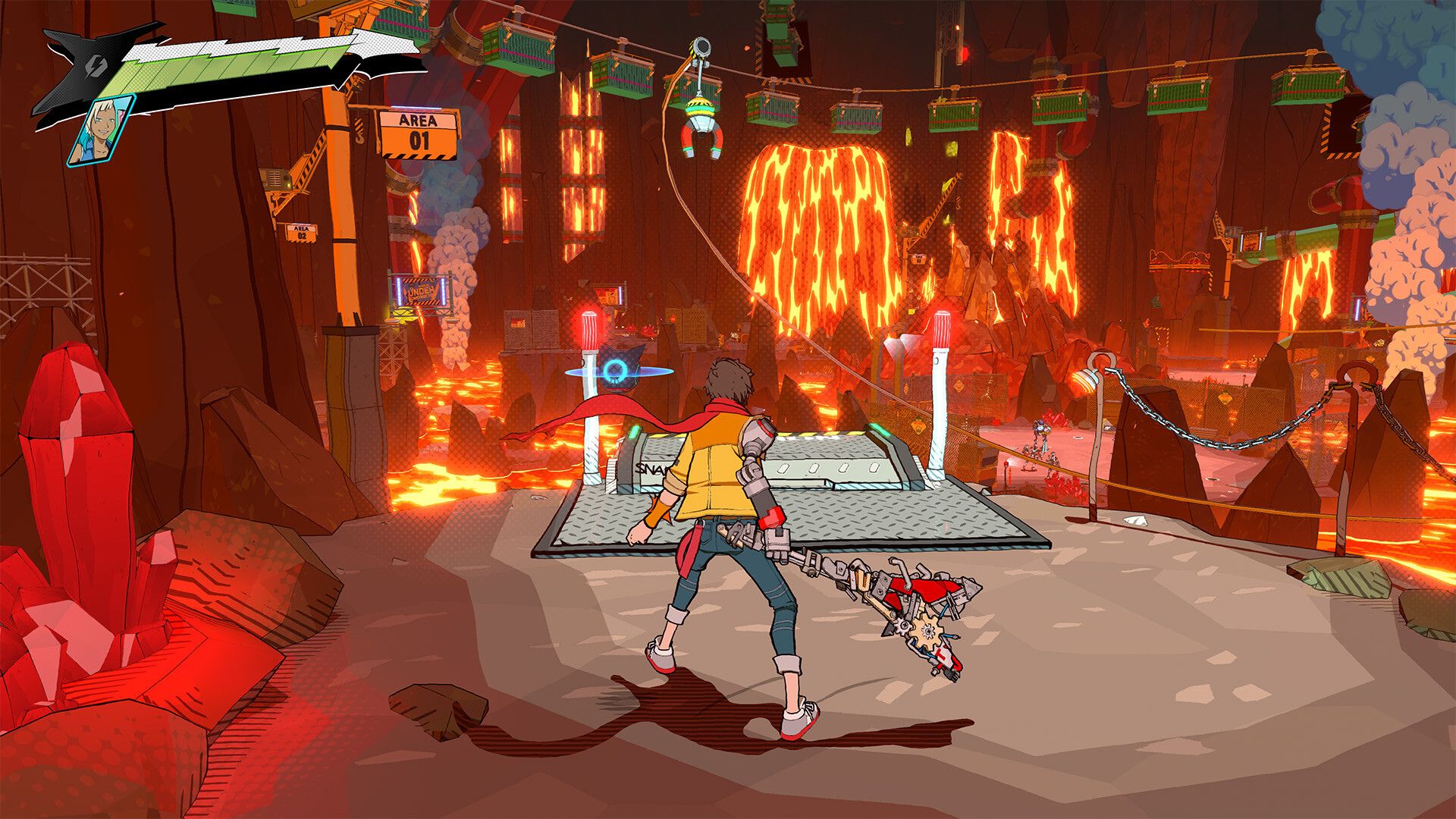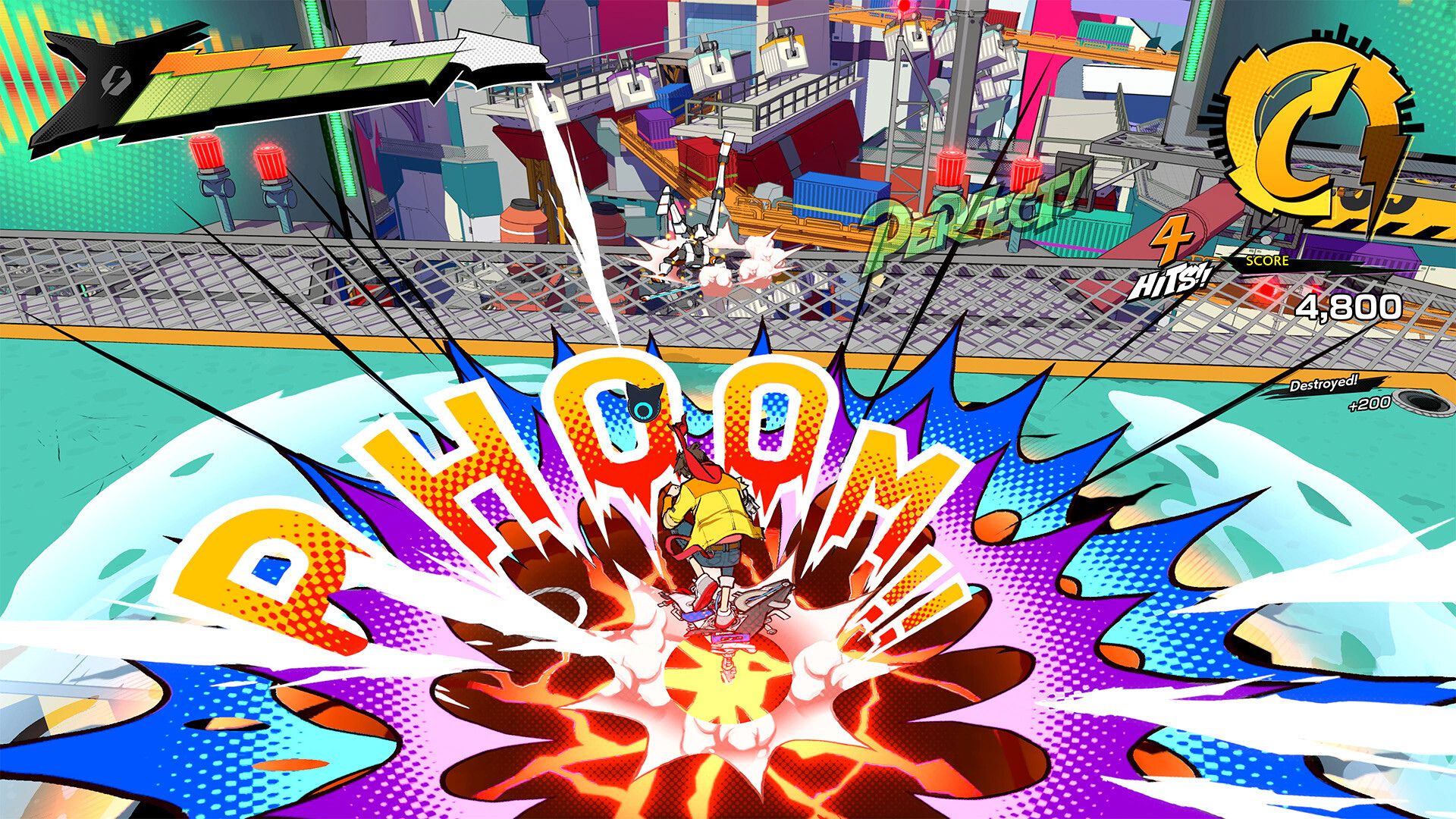
Esteemed as one of the best Xbox Series X games, Hi-Fi Rush turned plenty of heads when it was shadow-dropped by Tango Gameworks earlier this year. The studio, founded by Resident Evil creator Shinji Mikami, is primarily known for its eclectic horror diptych, The Evil Within.
“I wouldn't say Bethesda was afraid that we would, like, ‘blow it’,” says John Johanas, Director of Hi-Fi Rush. “But, you know, for anyone to say like, okay, you know us for making The Evil Within, we're gonna make this very poppy action game set to music which hasn't been done before… and they're like, ‘Yeah, that sounds like it'll totally work, no problem, just go ahead’ - like no one realistically would say that.”
Hi-Fi Rush stars Chai, a synaesthetic cyborg rockstar with rhythm *literally* embedded in his heart. The game takes place in a comedic cartoon world, as you unravel a corporate conspiracy with a cavalcade of quips and an evolving rhythm-based combat system - you string together combos by tapping your face buttons to an immortal beat in not only one of the best single-player games on Game Pass but one of the best Xbox Game Pass games of recent years.
Pitch perfect

Johanas is sitting in a Brighton pub the morning after Tango Gameworks took home the ‘Best Original IP’ award at this year’s Develop Conference. It’s safe to say that his pitch paid off. Hi-Fi Rush is one of the highest-rated games of 2023, even with a new Zelda, Diablo, and Final Fantasy to contest with. “The most important thing we wanted is for people to remember the game fondly,” Johanas says. “We looked back at the games we remembered, and they were all like, maybe not 100% for every audience, but they had a very specific goal, and they went 100% towards it.”
The goal for Hi-Fi Rush was a holistic rhythm-action experience, a fun adventure where absolutely everything, from the environmental assets to the combat, synced with the soundtrack. A daunting task, to be sure, but Johanas and his team committed wholeheartedly. “We were not going to sacrifice that for anything,” Johanas states. “If people came back and were like, ‘you should take the music out of it’, then we’d be like, ‘no, then you should cancel the project. That's not what this game is.”
The first few notes

Johanas’ game dev origin story is a fun one. He grew up playing music, a saxophonist in his school’s symphonic and late-night jazz bands. He later picked up bass, guitar, and piano, eventually forming a Radiohead cover band with his friends. At university, Johanas taught himself drums to play in a Japanese rock band, covering songs by Number Girl - who he would later tap for Hi-Fi Rush’s licensed soundtrack.
As an adult, he moved to a countryside town in Japan as part of the JET exchange program and worked as a teaching assistant, learning the language in his spare time, before applying for a job at Tango Gameworks. After working as a designer on the first installment, Johanas directed The Evil Within 2 and its DLC before pitching Hi-Fi Rush internally.
His pitch came at the right time, as Tango was hungry to prove that the studio could step outside of the horror genre and succeed. “[Mikami] has worked in all genres before, especially action games, and he saw the potential in the project,” Johanas says. “He’s a very good champion of, you know, ‘Make it but make it the game you want to make. Don't make it like what I would do.’”
Mikami would check in to make sure they weren’t going off the rails, but Johanas’ and his team were always very serious about the project, and this brewed healthy confidence whenever they would show it off internally. It tested very well, even during the prototype stage, where it was pure gameplay and no visuals. “Towards the end of the project, [Mikami] was extremely hands-off because he clearly saw, like, he knew what we were doing,” Johanas explains.
“And as a director on a project, or someone who's worked with someone for that long, it's the best feeling that you could almost have. Some people might say it's bad to feel ignored, but I didn't feel ignored - it felt like we were so trusted with the thing that we wanted to do.”
Mikami’s wisdom paid off, as Hi-Fi Rush’s most compelling metric is that it is 100% itself. Songs by Nine Inch Nails and The Prodigy augment its boss battles, and the game delivers a range of diverse references to players, from Xenogears to Twin Peaks. Johanas picked out a specific example during development, where he drew on his taste in rhythm games.
“(The team) would come back and say, like ‘oh, [Chai] has to have a guitar’, but I was like, you know, he doesn’t play guitar, the guitar is in his mind, which was the whole thing in Um Jammer Lammy, where she would just use random things to be the guitar… like a baby,” Johanas says. “So I was like, ok, so he’s going to pull, literally garbage, and that’s going to be his guitar, and he’s going to turn that from, like, trash, into becoming a rockstar.”
A strong supporting band

Naturally, Tango’s decorated audio team played an important role in ensuring that Hi-Fi Rush achieved its riveting tempo. Beyond the licensed music, Johanas would provide reference points on a stage-by-stage basis, from Beck to Pixies, and allow Audio Director Shuichi Kobori and his team to work their magic.
Kobori previously worked extensively on the Metal Gear Solid series, and adapting his electronic style to a rock-focused game created exciting challenges. Kobori had limited experience with the guitar, but this was perfect for Johanas’ vision, as he didn’t want the parts to “sound like there was a pro playing it”. Rather, as an extension of its scrappy main character Chai, he wanted Hi-Fi Rush’s soundtrack to include tracks that sounded rough around the edges, with music you could play if you were learning guitar.
This comes through in the face-melting but finessed final mix. “I think they were very apprehensive at first because it was so different than what they've done before - they were maybe a little bit nervous about what will come out,” Johanas describes. “But by the end of it, they were extremely happy and excited and just loved putting all these extra touches on the songs.”
There’s no science to it, according to Johanas, but a strong sense of focus and a boatload of iteration helped Tango Gameworks to pepper in the small details and pieces of heart that the Hi-Fi Rush fanbase continues to fawn over. “I’d rather have that, and it's like, a little bit flawed than have a more generic mass appeal thing,” Johanas says. “Not to hate on those types of games, but I’d rather have something where 100 people or ten people are like ‘That is my favorite game of all time’, than 100 people saying ‘Oh that wasn’t bad.’”
Beats 'em up
Announced as part of Xbox’s Not-E3 announcement salvo, Hi-Fi Rush received a victory lap ‘Arcade Challenge’ update in early July, a fan-focused swan song fronted by two new modes. “It’s us taking the battle system and the rhythm-action experience and seeing how far we can push it,” says Johanas. “Like, how fast can we go without it breaking down.” BPM Rush raises the campaign’s cap of 160 beats per minute to a whopping 200, demanding keen focus as you slash and swing in time to the music. Elsewhere, Power Up! Tower Up! evokes Roguelike comparisons with upgrades between rounds, arriving as a response to the more curated battles seen in the main game. Tango wanted to see what would happen if they made players think on their feet and react to situations they couldn’t prepare for. Tango added plenty of free customization options to the game in tandem, as well as a heartwarmingly old-school secret reward for those who 100% the game.
Now that the dust has settled, like all of us, Johanas is pushing through his backlog for inspiration and finds himself both scared and invigorated by how high the quality bar is across all forms of media. Does he see a Hi-Fi Rush 2 in his future, though, or maybe even an Evil Within 3? A ‘necessary evil’ question to wrap up our talk… “I don’t think I’m ever done with any idea,” says Johanas. “I would never like shut the door on anything, but regardless of what we do, I think both of those IPs are just things that are close in my heart, so it would be cool to one day revisit them.”
We've pulled together the best single-player games worth playing when you're done with Hi-Fi Rush, but if you're looking for something a little more social, we've got all the best co-op games too.







